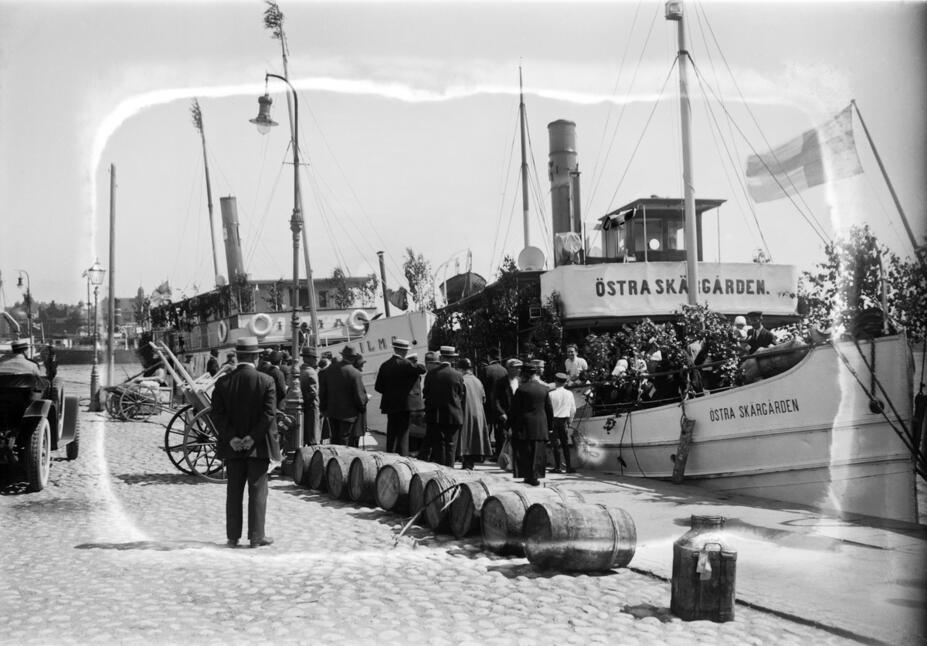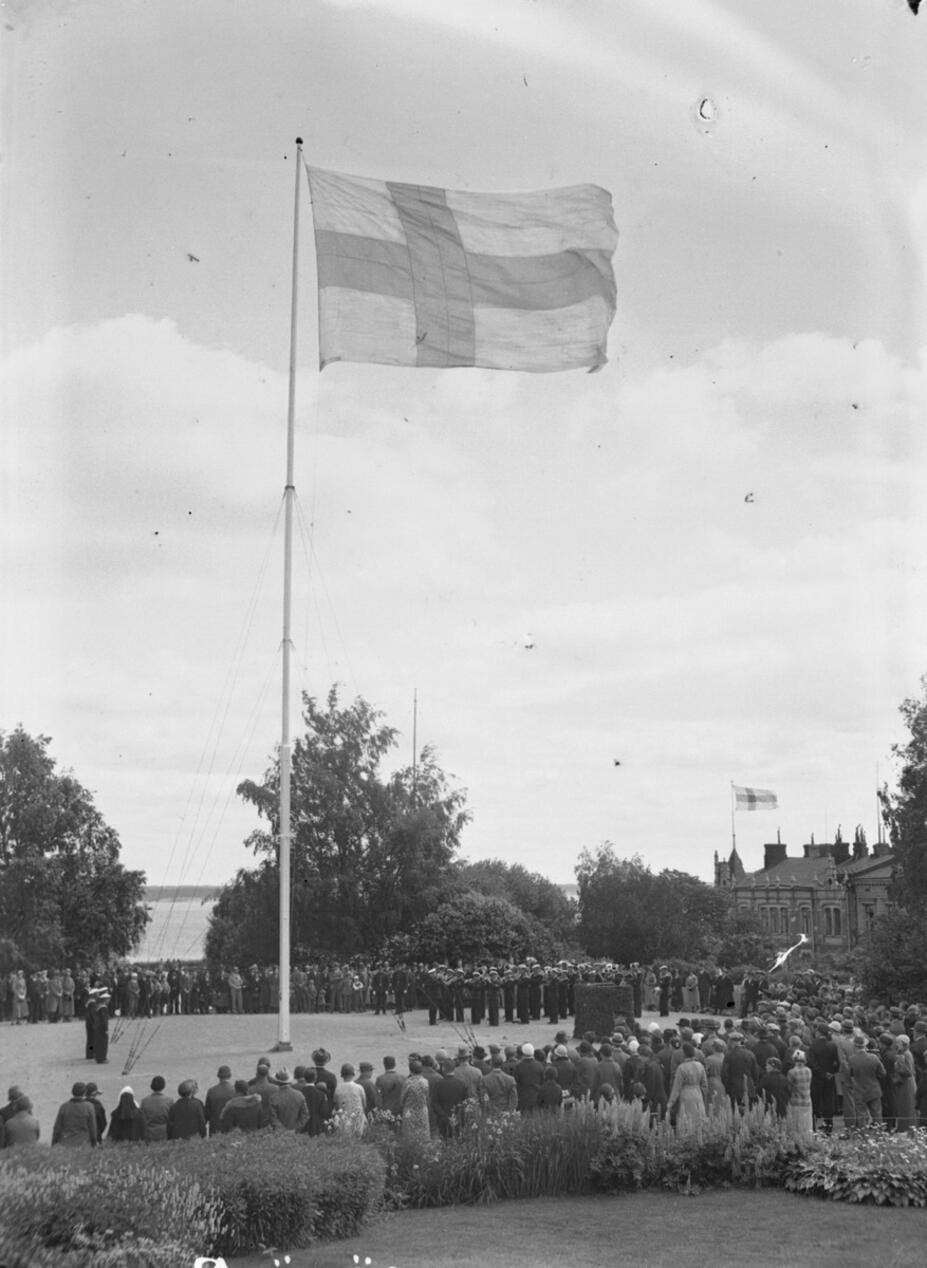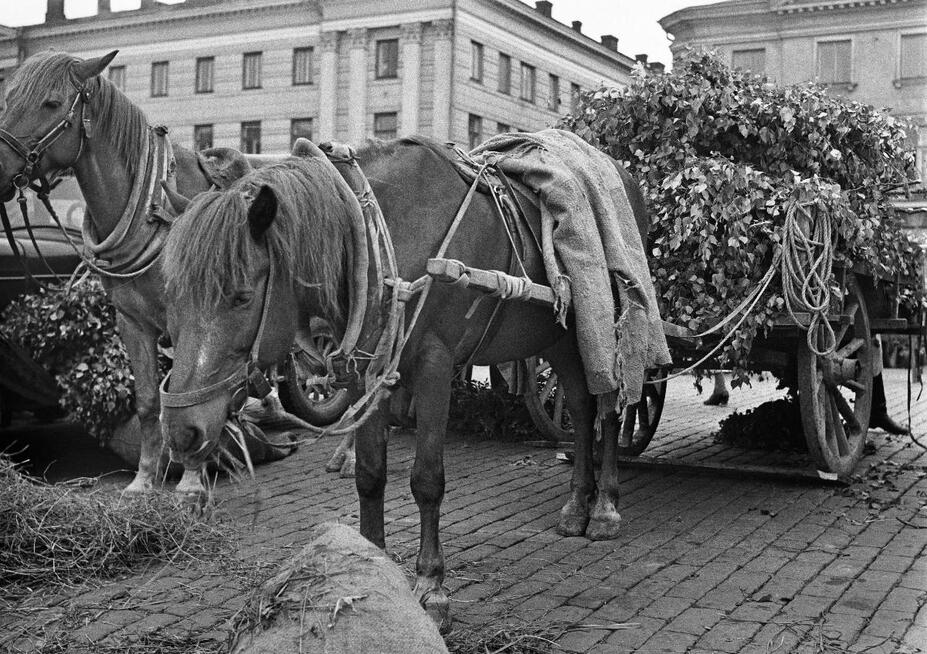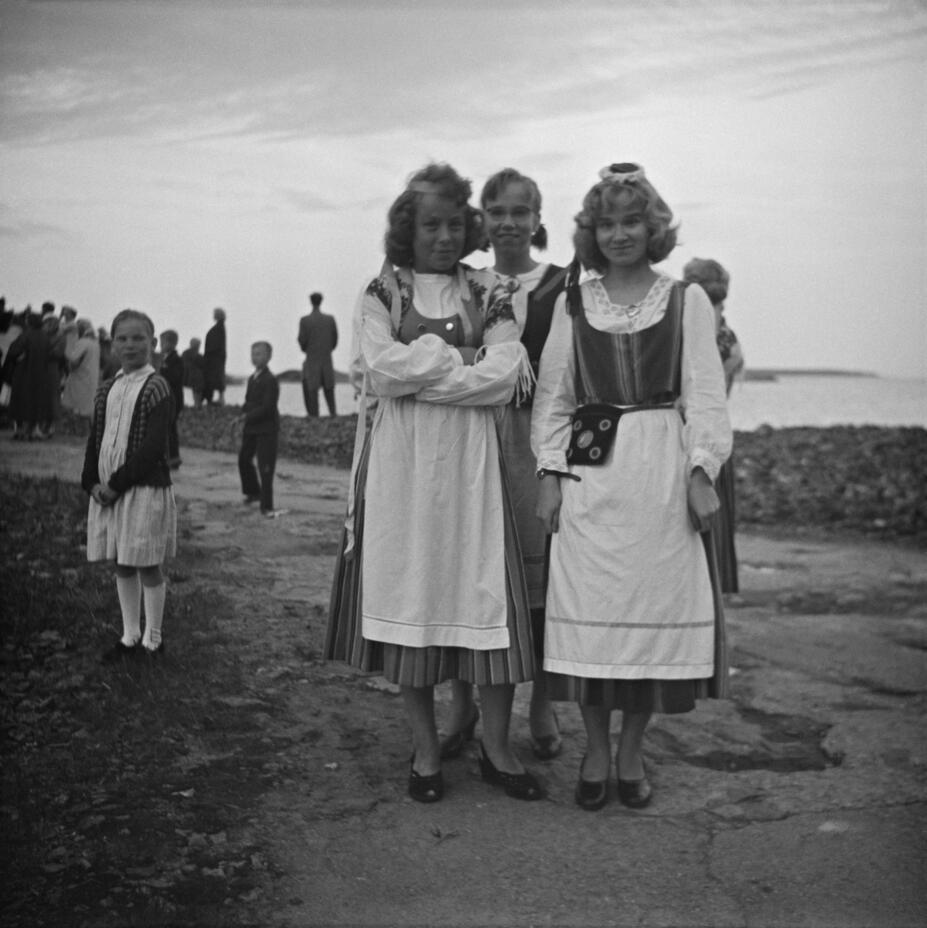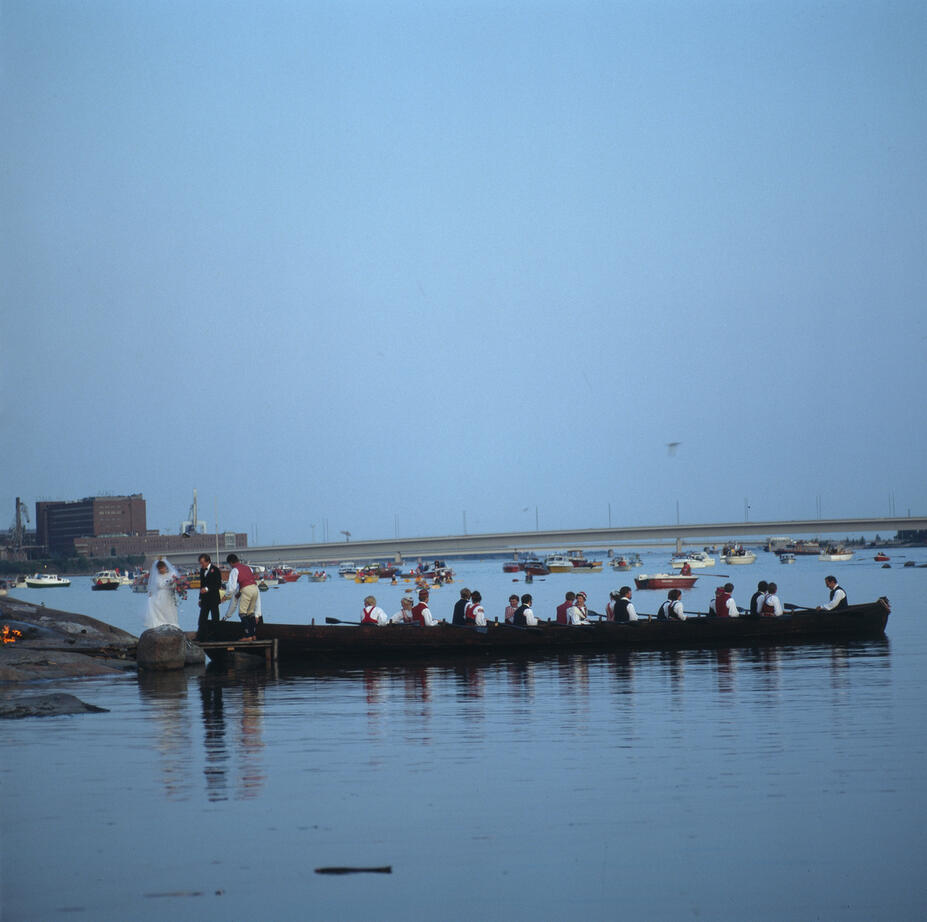In the first decades of the 20th century, middle-class Helsinki residents travelled to the countryside for Midsummer in droves, and to villas instead of the current small holiday homes. Those who didn’t own a villa could visit relatives or friends, or rent one. Going to a boarding house for an all-inclusive holiday of the time was also common. People did not dress like woodsmen at the villas: a dress code was followed during mealtimes. The beauty salons and hairdressers in Helsinki were extremely busy right before Midsummer in 1937, a time of an economic boom. Sporty outdoor activities such as boating and camping were also popular, as evidenced by articles describing the sales of tents and swimsuits in record numbers.
The working class spent Midsummer in a people’s park (from the Swedish term ‘folkpark’, a public recreation space at the edge of the city), at an allotment garden or at a location owned by an association such as the island of Lammassaari. Camping was extremely popular, and hundreds of tents were pitched at Midsummer on the Kivinokka headland and the islands of Pihlajasaari and Varsasaari, among other places. People took day trips to people’s parks where spending the night was not possible, such as the island of Korkeasaari.
Midsummer is an old pagan festival that was later turned into an ecclesiastical holiday. Midsummer is still associated with agrarian traditions also in urban areas, such as midsummer birches and bonfires. Folk dancing and national costumes represent the agrarian society and also patriotism, which is an integral part of Midsummer in Finland, as Midsummer officially became the Day of the Finnish Flag in 1934.
On 23 June 1934, the newspaper Ilta-Sanomat reported that a record number of Finnish flags had been sold and that Itsenäisyyden Liitto (‘the League of Independence’) was organising flag celebrations around the country. The newspaper also gave instructions on how to celebrate the Day of the Finnish Flag: “The celebrations should be kept as short as possible. For example, the speech should not last more than ten minutes so as not to fatigue the audience. At exactly 12 noon, the audience should uncover their heads and a young woman, preferably in national costume, should hand the flag to a young man to attach to the flagpole and raise, without the flag ever touching the ground.” It was further instructed that once the flag was up, a military band should play “Porilaisten marssi” (March of the Pori Regiment, the honorary march of the Finnish Defence Forces) and if a band is not available, a choir should sing “Valalaulu” (Military Oath Song). This was to be followed by a recitation of Lauri Viljanen’s poem “Suomen nimi” (Name of Finland), a performance of Yrjö Kilpinen’s “Lippulaulu” (also called Siniristilippumme, the Finnish flag anthem) and a speech. This was to be followed by three cheers for the fatherland and the Finnish national anthem “Maamme” (Our Land).
In addition to the traditional Midsummer celebrations, Helsinki offered already in the 1930s more urban activities such as an elegant dinner and dancing in a restaurant. In the 1930s in the capital, Midsummer was a time for going to the cinema, and restaurants had special Midsummer events, as indicated by the newspaper advertisements below. Although the media of the time often told the story of a deserted city, just like the media today, most residents stayed in the city for Midsummer. For example, according to a documentary on Midsummer in 1964, only one in four Helsinki residents went to the countryside.
Midsummer in the countryside always includes going to the sauna, but it is less important in the city.

